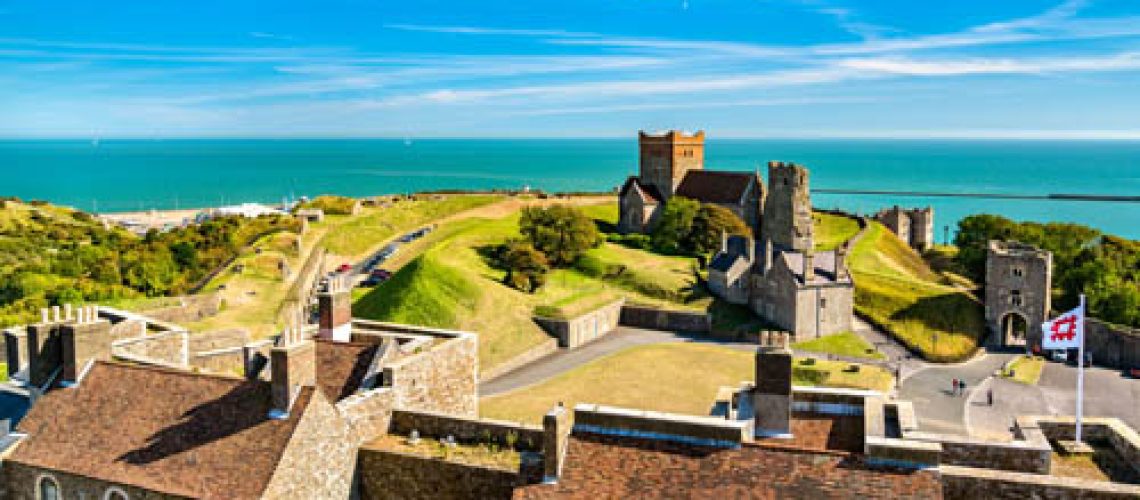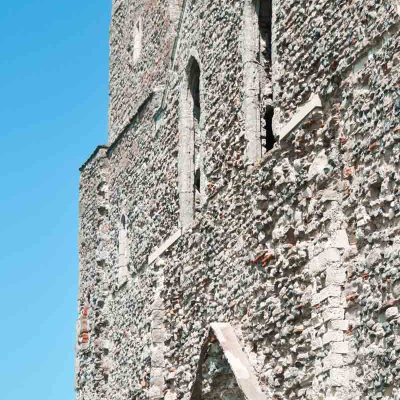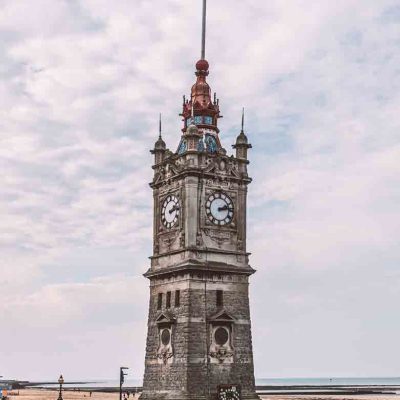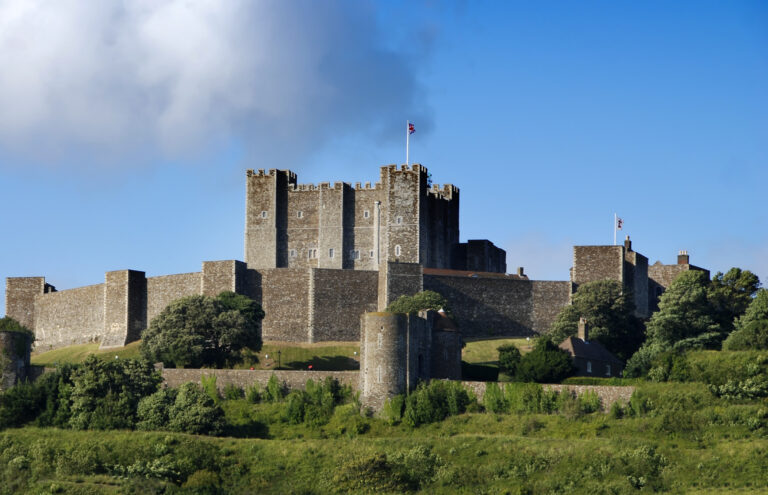


Have you ever looked out over the English coastline and wondered about the history behind it? If you’ve visited Kent, you may have spotted the remains of ancient coastal buildings that stretch back centuries. The coastline of Kent is peppered with a fascinating array of historical sites that form a timeline of many eras.’
These coastal buildings tell a vivid and captivating story, from Norman castles to stately homes, industrial harbours, and holiday resorts. This article will examine how these historic structures shaped the county’s history and continue influencing its culture today. We’ll discuss which forms bear the mark of each era, why they were built in their particular locations and how successive waves of development have altered the coastlines.
From the Roman period until today, Kent has been essential for historic coastal buildings. The Roman presence in Kent began in 43 AD when they first settled there and established several settlements along the coasts. Roman settlers built various structures in this period, including forts, villas, and temples. Many of these buildings have stood the test of time and are still visible today.
The most famous of these is Richborough Castle, which the Romans built as a fortified port near Sandwich Bay. The castle is notable for its impressive Roman architectural style, majestic archways and large towers. It was designed to protect the nearby settlements from attack by rivals or sea-borne raiders.
Other notable Roman coastal buildings include Reculver Tower near Herne Bay, once part of a larger Roman complex, and Lullingstone Villa in Eynsford – one of the best-preserved examples of a Romano-British country house in the UK. Together these structures tell us much about how early settlers spread throughout Kent and inhabited its coastlines.
The medieval era in Kent was an era of impressive building works. One of the most impressive structures is the 12th-century Rochester Cathedral, one of the oldest in England and renowned for its intricate stone carvings. In addition, several churches were founded by Benedictine monks during this period, such as St Mary’s Church in Minster-in-Thanet, St Augustine’s Abbey in Canterbury, and All Saints Church in Sandwich.
Another hallmark of medieval Kent was its monasteries, a reminder of the importance of these houses during this period. The Benedictine monastery at Folkestone was perhaps the most famous, although many others were scattered throughout the county. These monasteries served as housing places for monks and pilgrims alike and provided a spiritual destination for those who visited them. They also contributed to Kent’s medieval economy by producing goods and providing services to local people.

Shifting back to the Tudor Period (1485-1603), this was a time of significant expansion and fortification for England. Kent was a key target for the Tudor expansion, and King Henry VIII was responsible for building many of the coastal defences that are still visible today.
The key sites from this period are Device Forts, Deal Castle, Walmer Castle, Sandown Castle and Garrow Hill, all commissioned by Henry VIII. Built along the coast of Kent, these castles were intended to protect England against threats from outside forces.
To withstand attack, these castles were outfitted with various defensive mechanisms, such as moats and gun decks. Many of them remained active right until 1960!
Today, you can still visit these ancient sites to feel like you’ve returned in time. They have been wonderfully preserved over the centuries thanks to their robust construction and heritage status with English Heritage.
As you look at pictures of the coastal buildings in Kent, you can almost feel the area’s history. Returning to the Georgian and Victorian eras, when so much changed in this part of England, buildings changed, too!
The Georgian-style architecture was famous from 1714 to 1830. This style can be seen everywhere around Kent, from Canterbury to Dover. Georgian-style structures were often symmetrical and had minimal ornamentation on their exterior walls.

The Victorian era had its distinct style of architecture that flourished in Kent between 1837 and 1901; this style is more elaborate than the Georgian period and emphasises more ornamentation.
Buildings like The Arcadian Hotel and Jubilee Clock Tower in Margate remain some of Kent’s most iconic examples of Victorian architecture.
So remember to look up next time you’re walking along the coast; you’re getting a two-for-one dose of history just by taking it all in!
Another significant contributor to Kent’s coastal history is Edwardian architecture. Edwardian architecture refers to the style of architecture that characterised the British Edwardian period from 1901-1914. During this time, Britain went through a period of rapid development, resulting in a unique and highly recognisable architectural style.
The impact of Edwardian architecture in Kent is felt most strongly along its coast. During this era, large mansions were built for wealthy elite families, often in a Mediterranean or Venetian style, with wrought iron balconies and terraces. The famous White Cliffs of Dover were also created during this time, now a crucial part of Kent’s coastal landscape.
This type of architecture has had a stimulating effect on the physical landscape of Kent today:
As you can see, Edwardian architecture continues to shape the physical landscape, culture and atmosphere in many places within Kent today.
You may need to learn that modern coastal buildings in Kent still give us a glimpse into its past. Since the Normans began building in the area centuries ago, several structures have been added.
This castle is one of the most iconic structures in Kent and has stood for nearly 1,000 years. It consists of a keep, courtyard wall and defensive features like tunnels, towers and moats. It protected England from foreign invasions and was featured in several war films.
Built-in 1843, this lighthouse is a classic example of Victorian architecture. This building is also famous for being one of only three locations used to test Guglielmo Marconi’s experiments with radio transmission. It also features in “Treasure Island” as “The Admiral Benbow Inn”.

Built-in 1912, this Edwardian-style watch house stands atop the White Cliffs of Dover and provides spectacular views across the English Channel towards France. It was designed as an observation post to help guard against the German invasion during WWI and WWII.
From ancient castles to majestic lighthouses to lookout stations with strategic importance, many historic coastal buildings still stand today, allowing us to gain an insight into Kent’s long history and legacy.
Kent’s history has been shaped by the beautiful, historic coastal buildings that have withstood the test of time. From shell-coated Roman villas to at least two castles and a magnificent cathedral, it’s no wonder that the county’s coastal environment has been so influential for many centuries.
Whether it’s the natural limestone cliffs, sweeping sandy beaches, towering castles, and churches, Kent’s coastal history is rich and fascinating. Exploring the area, you can uncover evidence of human history dating back to the Iron Age, from the remains of ancient settlements to the elegant palaces and Victorian streets.
Whether you’re a visitor or a local, there’s much to discover about Kent’s storied past. Take a trip to the coastline and explore the historic buildings that have helped shape the history of this beautiful part of England.
Since 1893 Tuscan Foundry has been making and supplying cast iron and steel drainage and rainwater systems for projects throughout Kent, working with architects, heritage bodies, organisations, and homeowners.
Tuscan Foundry can make and supply cast iron guttering for building restoration projects in Kent; in particular, we work with architects and contractors on bespoke items, such as radius gutters and bespoke cast iron hopper heads, to ensure both authenticity and functionality.
Where can I purchase cast iron guttering near me in Kent?
Tuscan Foundry supply and deliver cast iron guttering and pipes for projects in Kent, nearby counties and throughout
the United Kingdom.
Can you offer site surveys for cast iron gutter replacement in Kent?
We provide a complete site survey for cast iron gutter and pipe in Kent; this service is chargeable at
a daily rate and mileage. Please get in touch with us for details.
Can you reproduce original bespoke cast iron hopper heads for projects in Kent?
Tuscan Foundry specialises in bespoke custom-made cast iron hopper heads and can reproduce any original to
suit the building’s period or style.
Is there a typical profile of cast iron guttering used in Kent?
The size and profile of the cast iron gutter used on buildings in Kent are more relevant to the age and style of
the building, along with the size of the drained roof. We can offer guidance where required.
What is the typical lifespan of cast iron guttering in Kent?
The lifespan of cast iron guttering varies according to several factors. Still, the top of the list would be regular
cleaning and painting, which will depend on location, i.e. guttering and downpipes on a Kent coastal property will require
more frequent painting than inland.